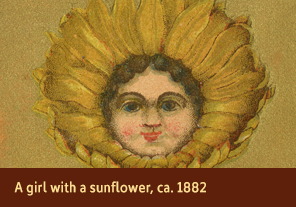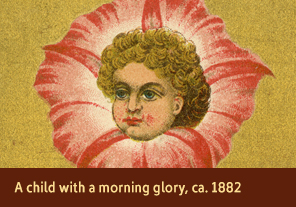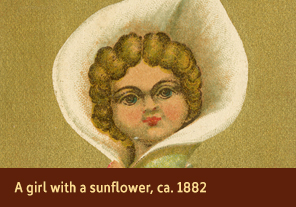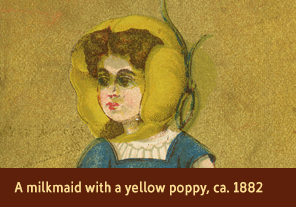Charlotte Perkins Gilman: Artist and Illustrator
Charlotte Perkins Gilman enrolled at the Rhode Island School of Design in Providence to study art in 1878. While in Providence, Gilman created and sold art works for advertising trade cards. Here are several cards with Gilman’s illustrations that feature figures with different flowers encircling their heads. Take a closer look at each illustration, and consider different meanings that flowers represented in her time.
-
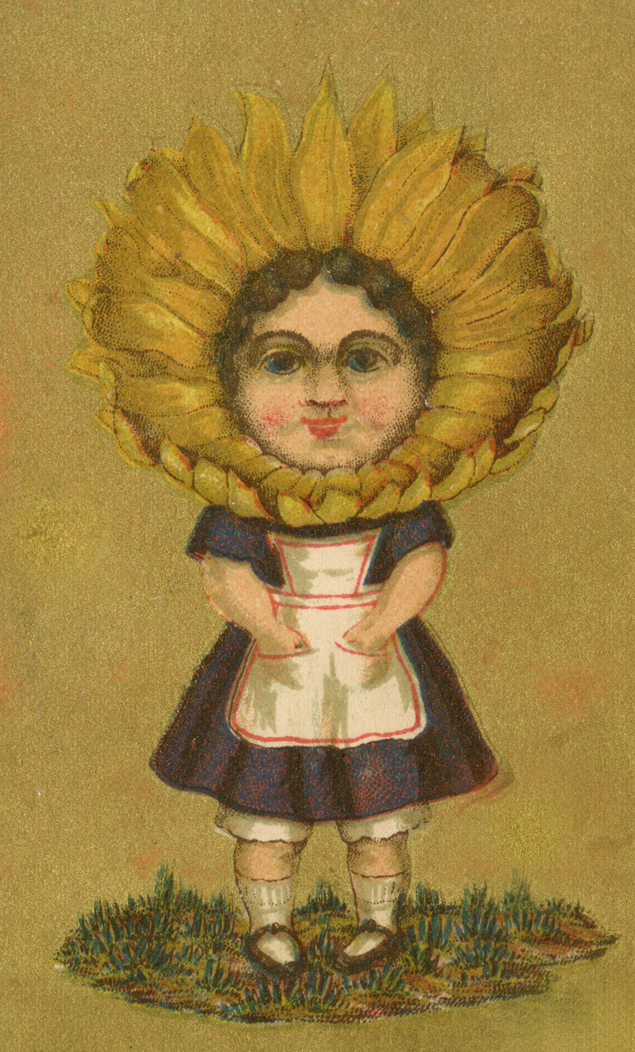 A girl with a sunflower, ca. 1882
A girl with a sunflower, ca. 1882Advertising trade card for Wetherell & Pierce Boston Shoe Store, Providence, RI, ca. 1882
Courtesy National Library of Medicine
The golden petals of a sunflower envelope the young girl’s large head on this trade card. Sunflowers had various meanings, including adoration, dedication, pride, and false riches in the 1880s. The back of the card advertises the shoe store of Wetherell & Pierce.
-
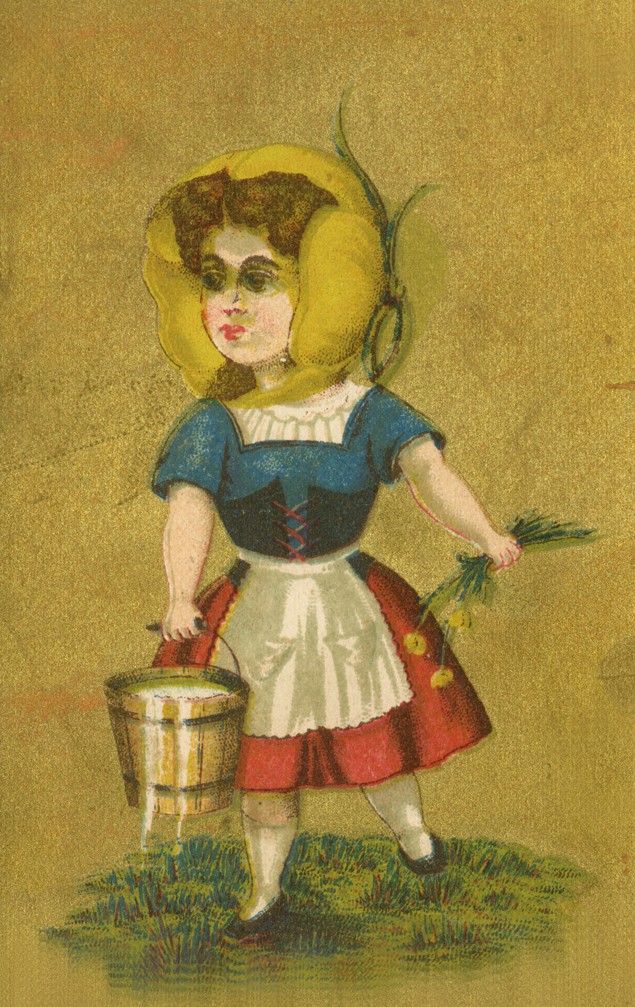 A milkmaid with a yellow poppy, ca. 1882
A milkmaid with a yellow poppy, ca. 1882Advertising trade card for Mrs. George H. Davis, a florist at Boston Rose Buds, Providence, RI, ca. 1882
Courtesy National Library of Medicine
A yellow poppy encloses a milkmaid’s head on this trade card. Yellow poppies represented wealth and success in the 1880s. On the back, the card lists the business of Mrs. George H. Davis, a florist.
-
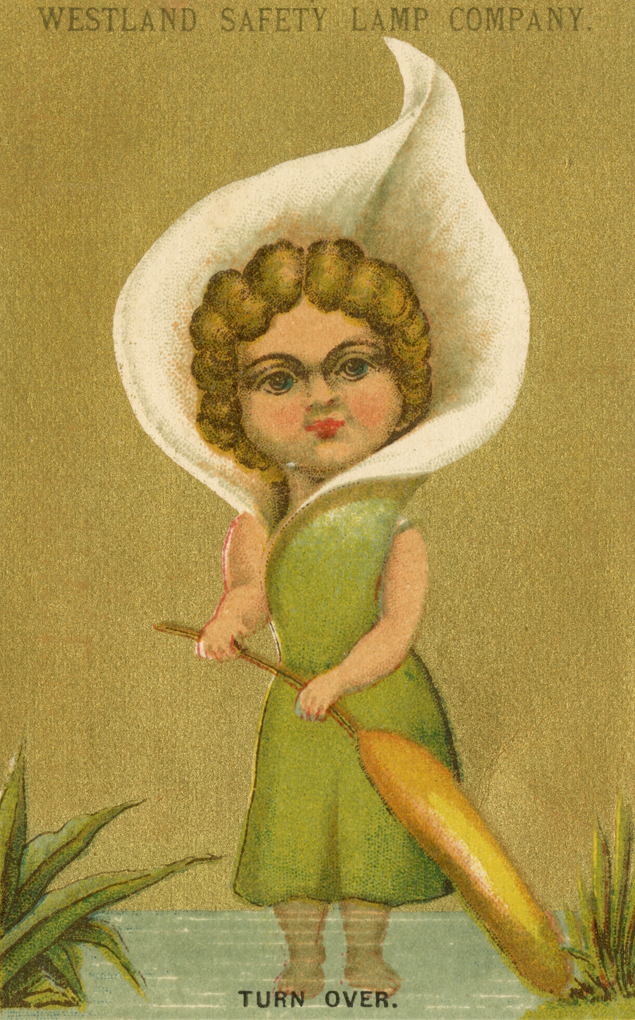 A maiden with a calla lily, ca. 1882
A maiden with a calla lily, ca. 1882Advertising trade card for Mrs. George H. Davis, a florist at Boston Rose Buds, Providence, RI, ca. 1882
Courtesy National Library of Medicine
A white calla lily frames a maiden’s head on this trade card, as she holds a cattail and stands barefoot in a watery marsh. In the 1880s, calla lilies sometimes represented purity and innocence, and cattails peace and prosperity. The back of the card advertises many types of “elegant and useful goods” for sale at the Westland Safety Lamp Company.
-
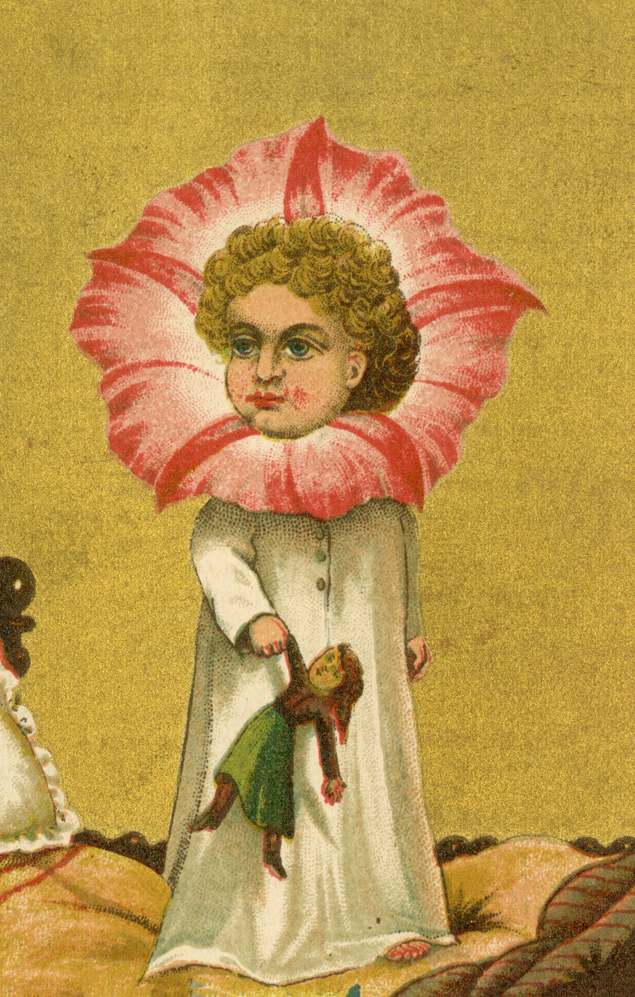 A child with a morning glory, ca. 1882
A child with a morning glory, ca. 1882Advertising trade card for Dr. Fair’s “Hair Care,” Providence, RI, ca. 1882
Courtesy National Library of Medicine
A bright pink morning glory frames the child’s golden curls on this trade card. Morning glories were associated with love and affection in the 1880s. A poem on the back of the card describes a maid of “wondrous beauty” whose hair was destroyed by a fever, then restored upon the use of Dr. Fair’s Hair Care.
-
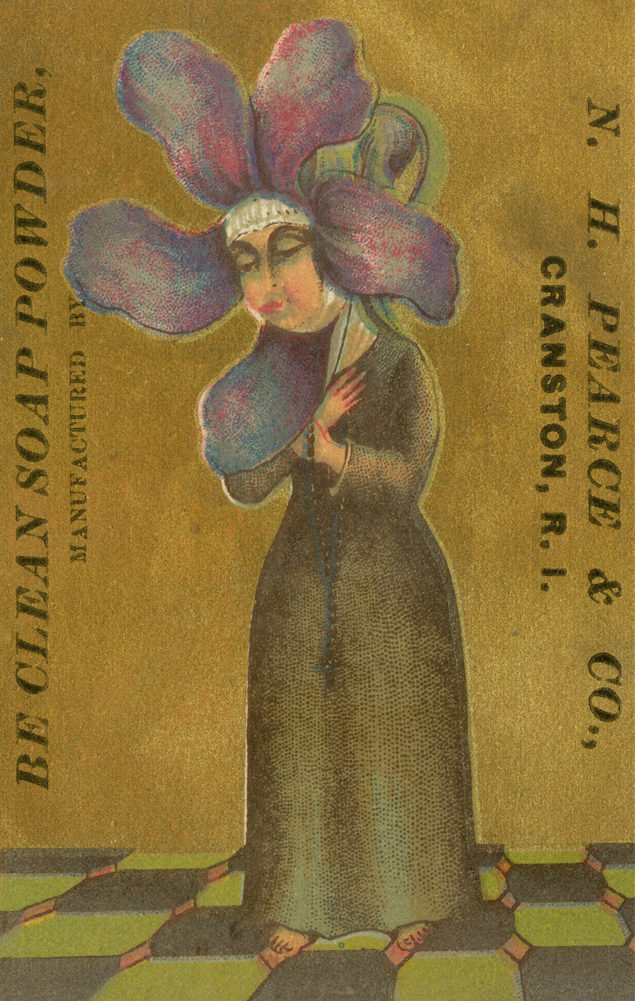 A nun with a wild geranium, ca. 1882
A nun with a wild geranium, ca. 1882Advertising trade card for N.H. Pearce & Co., Cranston, RI, ca. 1882
Courtesy National Library of Medicine
A wild geranium extends from the downcast head of a nun on this trade card for a soap powder. Geraniums come in many colors, each of which were associated with several different meanings during the 1880s. Some of the meanings associated with geraniums were gentility, peace of mind, consolation, and melancholy. Wild geraniums, in particular, were linked to steadfast piety.
